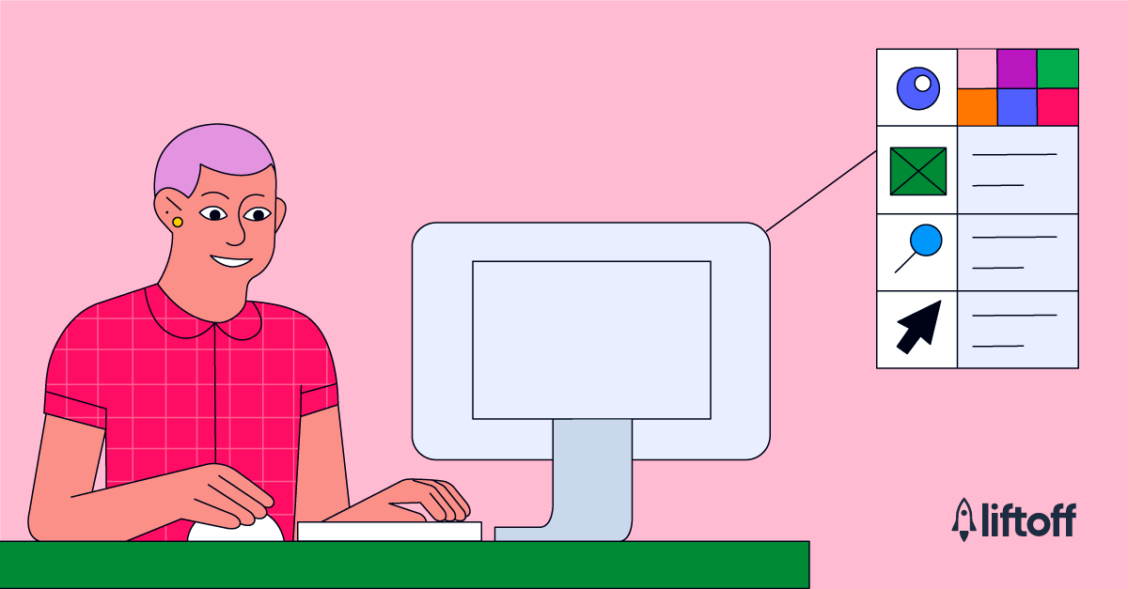
3 Things Successful Ad Designers Do to Stay Ahead of the Curve
Designers working in ad tech face many challenges. They race against tight deadlines while building unique brand-compliant creatives. Even when creatives perform, designers are still under constant pressure to improve upon winners. For new designers, keeping up can be difficult.
But even in a fast-paced industry where trends are constantly evolving, there are still best practices that successful mobile ad designers stick to daily. In this article, I look at three tried-and-true practices that keep top-notch designers ahead of the pack.
1. Get familiar with data and key industry metrics
Design is a collaborative process with specific goals, and making data-driven decisions is vital to a designer’s role. Whether it’s iterating on ad creative based on performance results or providing recommendations for a new ad creative strategy, your decisions must be data-driven.
When testing creatives, designers need to know the metrics that matter—and how they apply to the creatives they test. For example, conversion rates (CVR) are a key metric for evaluating any creative. We care about whether our ads are driving new users to the app. But when analyzing whether a video is successful, it’s not enough just to look at CVR. We need to explore how many impressions a video receives, how long users watch the video, when they click, and so much more.
Fortunately, familiarizing yourself with data is not as complex as it can seem. Here are some common metrics—and acronyms—used to discuss or measure in-app ad performance:
| UGC | User-generated content | Ads typically created by influencers |
| ITI | Impression-to-install | The ratio of how many views (impressions) of your ad turned into installs |
| CTR | Click-through rate | The ratio of how many impressions corresponded with a click on your ad |
| CPM | Cost-per-mille | The cost of advertising for every 1,000 impressions |
| CPI | Cost-per-install | The cost of advertising for every install |
| CVR | Conversion rate | How many users actually installed the app after seeing your ad |
Remember all your insights from data should be actionable. Interpret what you see, and use your insights to develop a core new idea, hypothesis, or ways to prepare users for the end card experience that’s about to follow.
2. Learn to spot new trends—or start a new one
Successful mobile ad designers stand out by monitoring new trends in ad creative as closely as possible. Ideally, expert designers can start trends or become early adopters of new trends.
To keep updated, know when to pivot. For example, in the recent past, the “must-haves” for gaming creatives included animated end cards with large, green CTA buttons and the word “free” somewhere in the creative. Now, level-selectors that preview the first few levels of a game are popular motivators for users to download an app and increase CVR.
Roll with data-driven insights, even if they seem counterintuitive. For example, we’ve found that long-form video ads (around 45 seconds) achieve higher CVRs than shorter videos. This seemed unlikely, given our short attention spans. But by testing longer videos, we were able to improve performance consistently. High-performing long-form videos have also made production easier—once you have a 45-second video, you can easily create 30-second, 20-second, or even 15-second videos to use in hybrid formats.
As you test and adopt new trends, you will learn to separate fleeting ideas from what will become best practice. For example, portrait in-app ads tend to perform better than landscape ads, and creating ads in portrait is now widespread and intuitive. The user interface for most apps is optimized for portrait orientation. Matching the native portrait orientation of the app with your ad design creates a more seamless user experience.
3. Optimize and improve upon new trends
Trends in mobile ad creative move fast. Sometimes, those trends become long-term best practices. Other times, they fizzle out just as quickly as they go viral. What matters most when working with new trends is optimizing the ad experience. Don’t just copy what you see—think about what makes it work.
For example, leveraging user-generated content (UGC) is becoming more popular across ad creatives for all app genres. Creator recommendations can come across as more genuine and authentic. They help build trust with the user—and are better at persuading them to download the app.

But to get the most from UGCs, it’s important to consider where the ad will be used and how audiences might experience it. Video ads are often muted. To make creator content work as ads, you have to add subtitles. This way, an audience can read it—even if the sound is off.
Creators can give you access to a broader audience, but it’s important to work closely with them to develop the right narrative. For example, if your product is solving a problem, frame the narrative around a problem instead of singing its praises. (For more information on making UGC work for your app, consult Liftoff Influence.)
Putting all of these strategies into practice may seem daunting, but you’re not alone. Liftoff Creative Studio has extensive data across multiple apps to guide your creative decisions and a dedicated Creative Strategist team to help identify trends (or start your own).
To learn more about how you can leverage Liftoff Creative Studio as your partner for all things design, contact your account manager, visit our webpage, or get started with Liftoff today.
